
Title: Electrically conducting micropolar nanofluid with heat source/sink over a wedge: Ion and Hall currents
Keynote Talk
Prof. J.C. Umavathi
Gulbarga University, India
Abstract
A theoretical exercise is conferred for the magneto-micropolar nanofluid layer flow past a wedge surface by virtue of its numerous fundamental problems which arise in nanotechnology, chemical engineering, polymers etc. The model exemplify an isothermal wedge surface. The fluid is incompressible, viscous, electrically conducting and carrying ion slip and Hall currents with source or sink. The Eringen micropolar model is set up for rheological properties of the nanofluid. A Tiwari-Das nanoscale formulation is utilized in order to study specific nanoparticles and base fluids. The dimensionless transformed, coupled momentum, angular momentum (micro-rotation) and thermal perimeter layer equations are solved with the efficient MATLAB bvp4c numerical scheme. Validation with earlier studies is conducted. The influence of Hartman number , Hartree pressure gradient parameter , Eringen vortex viscosity (micropolar) parameter , nanoparticle volume fraction , heat absorption (sink) parameter , Prandtl number and nanoparticle type on velocity , angular velocity , temperature , skin friction function and Nusselt number function are visualized graphically and in tables. The magnetic effects supports the transverse, horizontal velocity and temperature but suspends the angular velocity. Optimum rate of heat transfer is procured with iron oxide nanoparticles dropped in water and copper nanoparticles hanging in engine-oil
Biography
Biography Prof. J.C. Umavathi, Gulbarga University, India J.C. Umavathi completed her Post Doctral from the Department of Engineering, University of Sannio, Piazza Roma 21, 82100 Benevento, Italy. She is working as Professor in the Department of mathematics, Gulbarga University since 1993. She has published more than 230 research articles in reputed international journals. She is a recipient of Kalpana Chawla Young Scientist award, Sir J.C. Bose award and Erasmus Mundus Fellowship.

Title: Analysis on Temperature Distribution in Single Cell of PEFC Operated at 373 K Simulated by Heat Tnransfer Model Consdering Vapor Transfer
Keynote Talk
Dr. Akira Nishimura
Mie University, Japan
Abstract
According to NEDO road map 2017 in Japan, polymer electrolyte fuel cell (PEFC) system is required to be operated at 373 K for mobility applications from 2020 to 2025. However, the PEFC system is usually operated below 353 K. If PEFC system is operated at higher temprature than usual, we have to consider the following problems: (i) degdaration of polymer electrolyte membrane (PEM), (ii) catalyst erosion, (iii) uneven distribution of gas flow, pressure, temperature, voltage, and current in the PEFC. They should be solved to commercialize the PEFC system which can be operated at higher temperature.This study investigates the impact of separator thickness on distribution on reaction tempearature (Treact) changing relative humidity (RH) of supply gas changing separator thickness. This study has developed 1D heat trasnfer model considering vapor transfer to simulate the distribution of Treact. Separator thickness has been changed by 2.0 mm (Saddle thikcness: 1.0 mm, Channel height: 1.0 mm), 1.5 mm (Saddle thickness: 0.5 mm, Channel height: 1.0 mm) and 1.0 mm (Saddle thickness: 0.5 mm, Channel height: 0.5 mm). As a result, the distribution of Treact – Tini in case of separator thickness of 2.0 mm is the lowest among the investigated separator thicknesses. It is due to the largest heat capacity of separator. Consdeering the relationship between standard deviation of distribution of Treact – Tini and voltage obtained in the power generation experiment, the value of standard deviation in case of separator thickness of 1.0 mm is the smallest among the investigated separator thicknesses. It is revealed that the thermal properties of separator are important to obtain higher power generation performance as well as even temperature distribution under high tempreature operation condition such as 353 K.
Biography
Dr. Akira Nishimura is associate professor in Division of Mechanical Engineering at Mie University, Japan. He received the B.S. Eng., the M.S. Eng. and Dr. Eng. degrees in Chemical Engineering from Nagoya University, Japan in 1995, 1997 and 2000, respectively. He worked at Center for Integrated Research in Science and Engineering, Nagoya University as research associate from 2000 to 2002. He moved to Mie University in 2002 as an assistant professor and promoted to associate professor from 2014. He has published 81 peer-reviewed journal papers. His current researche is clarification on heat and mass transfer mechanism of PEFC.
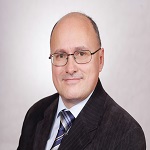
Title: Analysis of interlayer adhesion in UV systems prepared under industrial conditions
Keynote Talk
Dr. Tomasz Krystofiak
Poznan University of Life Sciences, Poland
Abstract
In recent years, environmentally friendly lacquer systems have been introduced in the woodworking industry. The most modern solutions include varnish products hardened by UV radiation. For their hardening various radiators are proposed (Hg, Ga). Recently there has been interest in energy-saving LED radiators. In these technologies, not only the application quantity, but also the type, number and power of the radiators play an important role. These parameters affect the interlayer adherence of the coating system. The aim of this study was to determine the influence of application and curing parameters of UV varnish systems on interlayer adherence. The material was prepared under industrial conditions. HDF boards faced with 4-sided ABS edges were finished with varnish systems using electromagnetic radiation energy.
Adhesion tests were carried out in accordance with PN-EN ISO 4624 standard. Test stamps with 20 mm diameter were glued to the tested surfaces using silane-epoxy adhesive. The samples were then subjected to 168 hours of air conditioning. Adherence was performed with a hydraulically driven PostiTest device. Images of delamination at destructive loadings were assessed visually.
On the basis of the test results, the correctness of the selected application and curing parameters of the coating systems was established. It was shown that the substrate - an HDF board - was predominantly the weakest part in the tested systems.
Acknowledgements
The research was carried out under project No. POIR.01.01.01-00-1235/17, implemented within the scope of the Operational Programme Intelligent Development 2014-2020, co-financed by the European Union from the European Regional Development Fund.
Biography
Tomasz Krystofiak in 1994 was finished study of Faculty of Wood Technology at Agriculture Academy in Poznan. In 2002 he prepared a PhD dissertation and in 2019 habilitation. Author or co-author of more than 300 scientific publications in the scope of gluing and finishing of wood and wood based composites. To his research activities belongs surface phenomena, wettability, adhesion and adherence, modification, gluability and paintability of lignocellulosic materials. He was a Management Committee Member of COST Actions FP1006 and CA15216 and Working Group Member (FP1303 and FP1407). Since 2021 Guest Editor in 6 Special Issues in Coatings, Forests, Materials journals.

Title: Design OTEC Plant Using Shell-Double Helical Coil
Keynote Talk
Dr. Mohammed W Muhieldeen Al Gailani
UCSI University, Malaysia
Abstract
Ocean thermal energy conversion (OTEC) is a hydro-renewable energy that utilize the temperature difference of warm surface seawater and deep cold seawater to operate turbine generator, thus producing electrical power by using the principle of Rankine Cycle. In the closed cycle of the OTEC system, a working fluid is circulated in a closed loop, which contains the principal components of heat exchanger, turbine generator and pumps. The aim of the study is to design and fabricate heat exchanger closed cycle of OTEC plant in the laboratory scale, which is able to generate a maximum of 10W of electrical power. Performances of single helical coil and double helical coil heat exchangers are studied by using the log mean temperature and effectiveness method. An increase in pressure in the refrigerant cycle increases the refrigerant velocity and thus increasing the power output of the system. Double helical coil heat exchanger has a higher heat transfer performance compared to single helical coil heat exchanger. A maximum efficiency of 26% is achieved for the closed cycle OTEC system with the double helical coil heat exchanger compared with the existing study which is 12% and this shows great achievement and enhance the working of the plant to generate proper amount of electricity. Future studies may aim at using the types of system and materials that are closely related or similar to the actual plant.
Keywords: OTEC, Renewable Energy, Efficiency.
Biography

Title: Mineralogical-chemical characterization of Bottom Ash for potential industrial application
Keynote Talk
Dr. Paola Stabile
University of Camerino, Italy
Abstract
Mineralogical-chemical characterization of bottom ash (BA) produced at incinerators is of major importance to determine, other than its composition, also the effect of temperature on treated waste and presence of stable/unstable phases. Waste incineration, in fact, represents the mainstream method for the management of unsorted urban and industrial wastes in many industrialized countries. BA is composed of refractory silicate materials, metals, glass as well as mineral phases newly formed at high temperature in the combustion chamber (T>900°C). Variable amounts of hazardous heavy metals, like Cr, Ni, Pb, Zn, Cu, can be still present in BA, and their evaluation is useful for optimizing the waste sorting.
Vitrification offers great advantages because of high destruction efficiency for organics (e.g., dioxin), immobilization of harmful elements and volume reduction. Vitrification experiments have been performed at lab scale under atmospheric conditions, Tmax 1100°C, for different durations (2–16h). Mineralogical results revelead that T< 1100°C and duration (<16 h) were not sufficient to produce homogeneous glassy products. For instance, amorphous content ≥65wt.% is reached in samples treated at highest T and duration. Additionally, results demonstrate that overall volatility of metals increases with treatment time and it can be influenced by the waste material incinerated (e.g., more plastics give more Cl) and the vitrification environment (air, or controlled atmosphere). Vitrification allows us to produce new glassy or ceramic-glass materials, relatively inert and suitable for potential insertion in new products and/or upcycling applications in the building industry.
Biography
Paola Stabile has completed her PhD from the University of Camerino (Italy) in collaboration with the Institute of Mineralogy of the University of Hannover (Germany). She has been working as research fellow and Adjunct professor in Petrography since 2016 at the University of Camerino. She has supervised many master and PhD students and she has pubblished more than 15 papers in reputed journals, mainly as first author author.
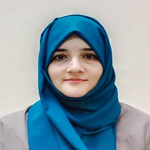
Title: Synthesis of visible-light active TiO2-based nanocomposites for photocatalytic degradation of reactive azo dyes
Keynote Talk
Dr Saima Farooq
University of Nizwa, Oman
Abstract
Globally, rapidly growing population and overwhelming industrialization are progressively depleting the freshwater resources. Contaminated water is severely damaging the environment by causing serious risks to human health and aquatic biota which puts in stressing demand to develop wastewater treatment strategies. The present work reports a one-pot synthesis of non-metal/transition metal co-doped TiO2 nanocomposites for photocatalytic degradation of reactive azo dye from aqueous solution. Various derivatives of TiO2 nano photocatalysts as S@TiO2 (singly-doped), and Mn/S@co-doped TiO2 with different weight percents were successfully synthesized and analyzed for detailed material characterization. The results revealed that S/Mn codoped TiO2 nanocomposite exhibited high surface area, large pore volume and enhanced optical properties than undoped and S-doped TiO2. Furthermore, the photoactivity of TiO2 nanoparticles was tested for Reactive Blue photocatalytic degradation. The co-doped nanocomposites (Mn/S@TiO2) manifested remarkable photocatalytic activity for the degradation of Reactive Blue dye under visible-light irradiation. The optimum degradation efficiency attained for reactive blue with Mn/S@TiO2 nanocomposites was 92% in a short time of ~70 min. The kinetic rate constants were found to be 0.00796, 0.04297 min and 0.0742 min-1 for undoped TiO2, S@TiO2 and Mn/S@TiO2, respectively. The significant degradation values and kinetic rate constant values strongly suggested that co-doped TiO2 degraded Reactive Blue at a higher rate than did undoped and S-doped TiO2. In addition, Mn/S@TiO2 catalyst can be effectively employed for the degradation of a range of textile dyes from industrial wastewater.
Biography
Dr. Saima Farooq has been working as Assistant Professor of Physical Chemistry at the University of Nizwa, Oman since 2013. She received her PhD degree in Physical Chemistry at the Quaid-i-Azam University, Pakistan in 2012 and did short-term post doc supervised by Prof. Chedly Tizaoui in 2019 at the Water and Resources Recovery Research Laboratory, Swansea University, UK. She has published more than 28 research articles in SCI(E) journals, 2 book chapters with total citations 628; h-index 14. Her research interests are wastewater treatment, advanced oxidation processes, adsorption and heterogenous catalysis.

Title: Eco-Friendly Alovera Based Nano composite membrane for heavy metals Adsorption from waste water: Synthesis, Characterization, Application
Invited Talk
Dr. Mahmoud F.Mubarak
Mansura University, Egypt
Abstract
Heavy metals are considered as important pollutants of fresh water, as they have a harmful effect on human and animal health, and on the growth of some agricultural plants, as well as reducing production or the rate of fruit ripening.In this research, thebio-composite nano-membrane based on poly vinyl chloride (PVC) as a support layer coated with a layer of Nylon 6 and overlapping with bark of alovera. The membrane was evaluated on the separation of heavy metals pb1+ and Cr2+ from polluted wastewater by studying thepermeate flow rate, temperature, the effect of pH and initial concentration of heavy metals during the separation process by the prepared bio-composite membrane. The membrane was prepared by ultrasonic physical impregnation mixing method in the presence of ultrasonicate waves to complete mixing process with Nylon 6 with chemical bonds. The results showed that the membrane has a high ability to separate and isolate the elements pb1+ and Cr2+ at different and high concentrations, various pH degrees and high temperatures. The membrane was characterized by SEM, IR, XRD, and TGA to determine the chemical and physical properties as well as the morphology of the membrane surface. By evaluating the membrane, it was found that the membrane having top layer with rough amorphous surface which help to increase the surface area of the prepared membrane and the pores are within 2 nm in the surface and inside from 5 to7 nm that increase the ability of the membrane to remove heavy metals such as pb1+ and Cr2+.The prepared membrane is an environmentally eco-friendly membrane based on a natural source in the treatment and can be applied in the tertiary treatment of wastewater.
Biography
• Dr. Mahmoud Fathy Mubarak, B.Sc. (2009), M.Sc. (2014) and Ph.D. (2018).Researcher, petroleum application department, Egyptian petroleum research insatiate.Dr. of Applied petrochemicals department in Faculty of Science, Mansoura University, Mansoura. PI, CO-PI and members of, 5 STDF water treatment and desalination projects.Editorial Board Member of Many Well-Respected of 7 Journals, Taylor and Francis, springer, Elsevier, MDPI.Published More Than 67 Papers In International Journals. Published 6 books/ chapters in the field of water treatment technology, water resources, and quantum dots. Recipient of Federation of Arab scientific

Title: DocDDA: Document Digitization and Data Analysis using Machine Learning and Computer Vision
Invited Talk
Siddhant Patil
University of California, Los Angeles (UCLA), United States
Abstract
Intelligent document processing has been a hot topic for research in the industry. This is because it increases business efficiency while saving the cost to the company. Big financial firms, medical institutions and legal entities process tons of documents on a daily basis. Manually processing all the documents is a time-consuming and laborious process. Machine Learning and Data Science come to our help in easing the work. End-to-end solutions that take the scans of documents, classify them, extract relevant key-value pairs and provide summaries are being built. The solutions can be deployed on cloud platforms like the Google Cloud Platform (GCP), Amazon Web Services (AWS) and Azure to achieve the required scale. The race is now towards building a solution that is able to match human intellect and provide the desired throughput with minimal human intervention. Thus, it’s really important to use the available data and machine learning approaches in the most-efficient way to tackle this problem.
Biography
Siddhant, a Machine Learning and Data Science enthusiast is a Master’s student at the University of California, Los Angeles (UCLA). He did his Bachelor’s studies at the Birla Institute of Technology and Science (BITS) - Pilani, India. He has professional work experience in the Machine Learning domain and has worked in India, Germany, Japan and the US. He led multiple client projects that required expertise and cutting-edge solutions in the Machine Learning domain. He has received numerous awards like the prestigious “Mantra - Innovator of the year Award”. He will join Amazon as a Data Scientist Intern this summer. He loves traveling and has visited 12 countries till now.

Title: Plasma technology for green energy from toxic gases
Keynote Talk
Dr. Rajneesh Kumar
Banaras Hindu University, India
Abstract
Microwave induced plasmas (MIP) are created and maintained by using an electromagnetic energysource, with frequency in the range of 300 MHz–10 GHz, in the absence of electrodes, thus limiting gas contamination. These sources have wide range of operating powers (from few watts to megawatts), required by thermal torches from very low pressures to several atmospheres. Because of these advantages, different types of atmospheric MIP sources have been developed in the last decade. In particular, the Microwave Continuous Flow Reactor (MCFR), Surface Wave Sustained Plasma (SWSP), Torch with Axial Gas Injection (TIA), Microwave Plasma Torch (MPT) and Microwave Cavity Plasma are well-known types of MW plasma sources. On the bases of design, working conditions and plasma properties, microwave plasma torches (MPT) are known as waveguide-supplied surface-wave-discharge MPT (surfaguide), coaxial-line-supplied coaxial-line-based nozzle- type MPT, waveguide-supplied coaxial-line-based nozzletypeMPT, waveguide-supplied coaxial-line-based nozzlelessMPT, waveguide-supplied metal-cylinder-based nozzlelessMPT, waveguide-supplied resonant-cavity-based MPT, coaxial-line-supplied strip-line-based and waveguide-supplied plasma-sheet MPTs. MPTs can operate in both confined and non-confined modes, corresponding to semi-metallic torches and metallic torches, respectively. In general,high density microwave plasma torches are designed as they canprovide suitable condition to dissociate molecules in the abatementsystems and burn out chemical and biological warfareagents, and to atomize and synthesize new materials. Therefore,it is very important to experimentally characterize the generatedmicrowave plasma in order to ensure that it is suitable for the desiredtechnical application. Fundamental plasma parameters, suchas gas temperature, gas velocity and active species emission profilesneed to be determined in order to have a complete plasmacharacterization. The gas temperature is related to the energy distributionamong the heavier particles in the plasma. It can differbetween different species and energy modes and it may be differentfrom the plasma electron temperature. Therefore simulation and experimental investigations are made to understand gas heating and dissociation in a microwave (MW) plasma torch at atmospheric pressure. Therefore our study reveals that microwave plasma torch can be used for waste (toxic gases like H2S, CH4etc) to energy (Hydrogen) applications efficiently.
Biography
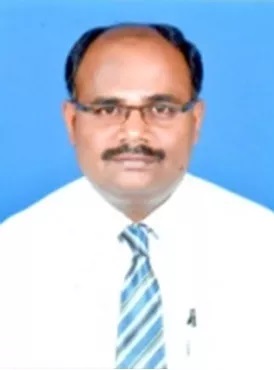
Title: Meta analysis of Whey protein in the regulation of Healthy life of human
Keynote Talk
Dr. Basavarajaiah D.M
Karnataka Veterinary Animal and Fisheries Sciences University (B), India
Abstract
Milk is made up of two proteins, casein and Whey protein can be separated from the casein in milk or formed as a by-product of cheese making. The milk constituents (80%) casein and (20%) whey protein. Whey protein is nutritionally most valuable component; they are composed of thermosensitive fractions, such as lactoglobulin and lactalbumin. The heavy and light chain immunoglobulin (IGs), bovine serum albumin (BSA), lactoferrin (LF), lactoperoxidase and glycomacropeptide (GMP) may also include the protease peptone components and low molecular weight products formed by the enzymatic degradation of the caseins during the cheese-making process. The Whey protein contains all amino acids ( nine essential amino acids) having a rich and balanced source of the sulfur amino acids that serve a critical role in releasing antioxidants and is potent for effective metabolism because it contains 3 to +4 times more bioavailable cysteine than other proteins. Cysteine is important for the biosynthesis of glutathione, a tripeptide with antioxidants, anticarcinogen and immune-stimulatory properties. Currently, numerous studies are conducted on whey protein extraction and usage, but in the case of human health intervention, a large number of studies will be necessary to describe the overall well-being of whey protein for the eradication of different diseases and ailments of human beings. In this paradigm, the present study attempt to address the health importance of whey protein by reviewing published articles worldwide. A total of 1465 articles were reviewed with an effective size of the population (n=136). Inclusion and exclusion criteria were adopted for reviewing the research papers. As per the literature survey , major health benefits of whey protein was noticed viz development of strength and improve body composition (95.12%, odds 3.22,p=0.001), promote weight loss by boosting metabolism (85%,odds 1.22,p=0.0031), suppressing appetite (73.21%,odds 4.55 ,p=0.00), boost the immune system (79.33%,odds 8.55,p=0.00) ,effective metabolism (84.52 %,odds 3.88,p=0.001) , bone development (93.63 %,odds 4.74,p=0.001) , reduce inflammation (83.15%,odds 1.33,p=0.00) , promote rapid healing of wounds (88.91%,odds 5.63,p=0.002) , lowering of blood pressure (79.52% odds 6.55,p=0.0008) , reduce hunger (87.33%,odds 5.42,p=0.000) , repair and preserve muscle tissue (94.85%,odds 3.87,p=0.00) , reduce the cholesterol (77.13%,odds 1.74,p=0.00) and suppressing the appetite (88.09%,odds 2.87,p=0.00) . Nowadays, the whey protein is rarely used in degenerative diseases and can be treated through chemotherapy, surgical operations, and a proper diet, often a part of this diet because of its rehabilitative benefits especially when it comes to autoimmune disorders or lupus and also treating different types of malignancy and Immunocompromised diseases like AIDS/HIV and TB co infection etc , . The results shows undesirable effects (95% with CI; 89.21- 102.33 %; AUC 0.97; specificity 98%, sensitivity 100%) that can be combated with an increased intake of whey protein increased CVD and ischemic stroke . In the realistic and practical approach, whey protein is one of the most important bioavailability resources for maintaining our gut system (p<0.001, odds 6.77). This kind of evidence-based Meta-analysis approach will help us to extend the basic and advanced nutritional health studies. Whey protein will be more health benefits for terminal illness patients (HIV, Cancer, neurological disorder, severely malnourished children, stunting, TB co-infection and meningitis etc). This study can serve as a tool for nutritionists, food specialists and clinicians for the formulation of food charts for terminal illness patients.
Key words: HIV, Amino acid binding, glycomacropeptide, sequencing, popypetide, BLAST
Biography
Dr.Basavarajaiah D.M working as an Associate Professor and Head , Department of Statistics and Computer Science, Dairy Science College, Karnataka Veterinary Animal and Fisheries Sciences University (B), Hebbal, Bangalore. My area of research heeds Statistical theory, Statistical modelling on high dimensional datasets of Agriculture, Engineering, Medicine, Veterinary and animal Sciences. Penned sixty eight research articles and five academic books. Serving as an editorial Board Member and Scientific Board advisor of Various International indexed journals. Life Member of various academic organizations. Honoured several accolades for my academic and research Excellency “Chartered Scientist award stalwart by Science Council, United Kingdom in Collaboration with Royal Statistical Society. Best Reviewer award -2016 ‘TRANS STELLAR’ Journal Publications and Research Consultancy ,TJPRC Ltd., (NAAS rated Journals), Fellow of Royal Statistical Society ,UK (London), Fellow of Mathematical Society ,UK (London), Bharathshikshratana and Indo-Dubai Achiever’s Pacific award honoured by Global Society of health and educational growth new Delhi, Best reviewer -2015, Best scientific Board advisor - 2016 and Best editorial Board Member awards bestowed by International academy of Engineering Science and Technology (IASET),USA.

Title: Hydrogen as an Energy Source: Challenges and Prospects
Keynote Talk
Dr. Mohd Yusuf
UTP Malaysia, Malaysia
Abstract
The rising concentration of greenhouse gases (GHGs) due to the enormous exploitation of fossil fuels is leading to ever-increasing global warming. Therefore, a treaty is signed between 196 nations of the world to limit global warming in the Paris Agreement held in 2015. A clean alternative fuel i.e., economically viable, leaving net-zero emissions on burning, can be used in the automobile engines without much engine modifications required to replace fossil fuels. Hydrogen (H2) is one such alternative clean fuel since it gives only water (H2O) on burning. H2 has a high calorific value and can be a promising alternative to fossil-based fuels. The H2 production method too should be green, since producing green H2 is needed for controlling global warming, whereas using grey H2 is meaningless when we talk about sustainability. Further, the techno-economic feasibility is another milestone that needs to be achieved for cleaner H2 production. Currently, more than 80% of H2 produced in the world is grey in nature. Gas reforming techniques are the main processes for H2 production, which can be modified into green H2 production processes. Among the different color spectrums of H2 production, the green, turquoise, and blue colors with shine and others may fade in the near future. Keywords: Greenhouse gases, Global warming, Hydrogen, Net-zero emissions, Clean Fuel
Biography
Dr. Mohd Yusuf was a former Head of Department and Assistant professor in the Department of Petroleum Engineering at Glocal University, India. He received his doctorate in Chemical Engineering from the prestigious Universiti Teknologi PETRONAS, Malaysia (i.e., among the top 150 Chemical Engineering Departments in the world as per QS 2021 rankings). He has a demonstrated history of working in the education management industry with versatile skills in Chemical & Petroleum Engineering. He published around 40+ research and review articles in international journals with significant impact factors.He is also currently serving as a scientific reviewer in several reputed Q1/Q2 journals from Springer, Nature, and Elsevier publications. His research interest includes Hydrogen Production, Green Energy, Catalysis, CO2 Valorization, Gas Reforming, Sustainability, Kinetic Modelling, RSM, Drilling Fluids, Materials &characterization.

Title: Deep Learning for Intrusion Detection
Invited Talk
Dr. Jemili Farah
University of Sousse, Tunisia
Abstract
The rising concentration of greenhouse gases (GHGs) due to the enormous exploitation of fossil fuels is leading to ever-increasing global warming. Therefore, a treaty is signed between 196 nations of the world to limit global warming in the Paris Agreement held in 2015. A clean alternative fuel i.e., economically viable, leaving net-zero emissions on burning, can be used in the automobile engines without much engine modifications required to replace fossil fuels. Hydrogen (H2) is one such alternative clean fuel since it gives only water (H2O) on burning. H2 has a high calorific value and can be a promising alternative to fossil-based fuels. The H2 production method too should be green, since producing green H2 is needed for controlling global warming, whereas using grey H2 is meaningless when we talk about sustainability. Further, the techno-economic feasibility is another milestone that needs to be achieved for cleaner H2 production. Currently, more than 80% of H2 produced in the world is grey in nature. Gas reforming techniques are the main processes for H2 production, which can be modified into green H2 production processes. Among the different color spectrums of H2 production, the green, turquoise, and blue colors with shine and others may fade in the near future. Keywords: Greenhouse gases, Global warming, Hydrogen, Net-zero emissions, Clean Fuel.
Biography
Farah JEMILI had the Engineer degree in Computer Science in 2002 and the Ph.D degree in 2010. She is currently Assistant Professor at Higher Institute of Computer Science and Telecom of Hammam Sousse (ISITCOM), University of Sousse, Tunisia. She is a senior Researcher at MARS Laboratory(ISITCOM–Tunisia). Her research interests include Artificial Intelligence, Cyber Security, Big Data Analysis, Cloud Computing and Distributed Systems. She served as reviewer for many international conferences and journals. She has many publications; 6 book chapters, 6 journal publications and more than 20 conference papers.
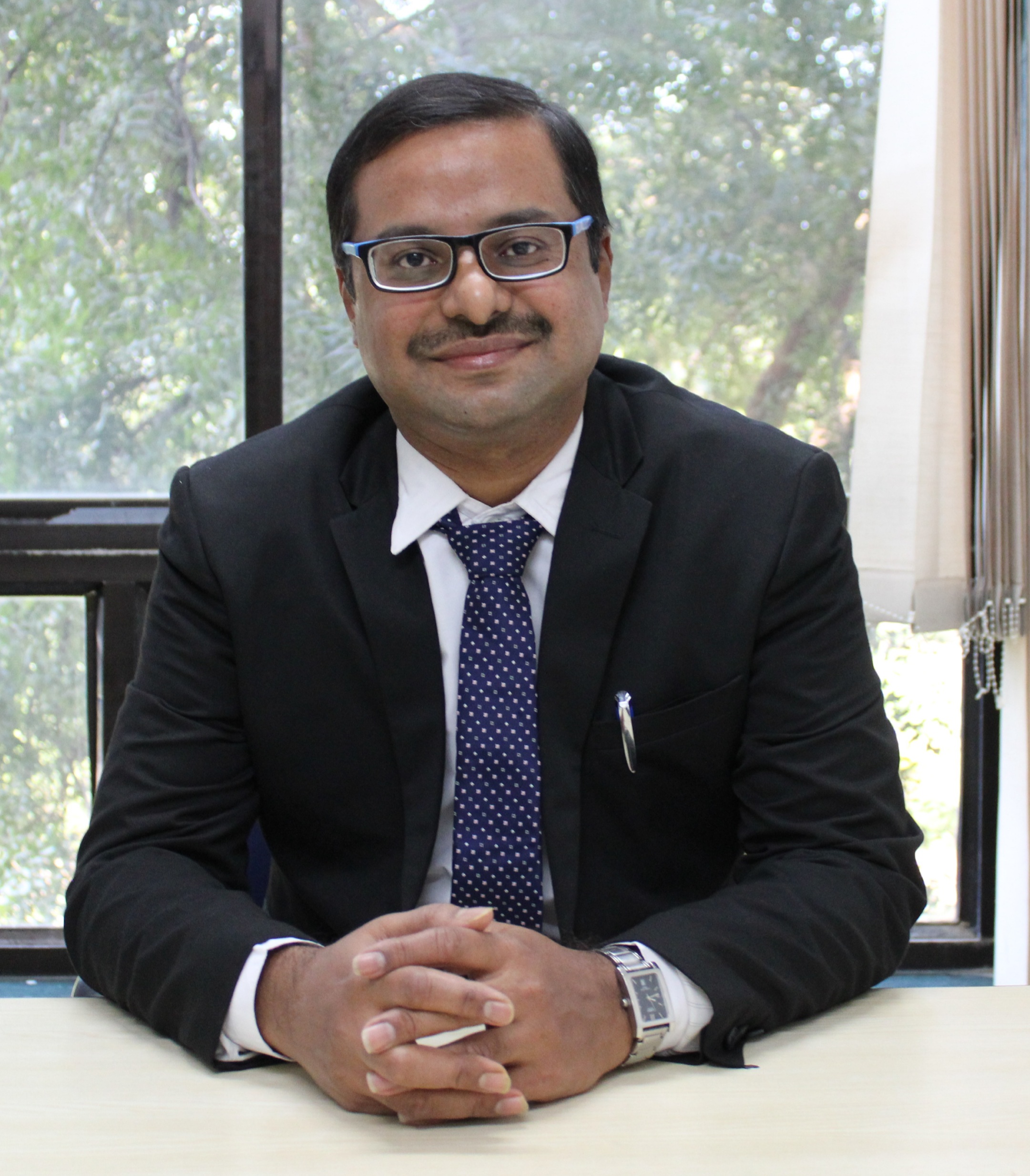
Title: ARTIFICIAL INTELLIGENCE IN SMART EDUCATION
Keynote Talk
Dr. Sailesh Iyer
Rai University, India
Abstract
Education has been carried out in traditional mode as well as in online mode. This paper finds the gaps regarding the learnability of the students, which has adverse effects on the employability and sustainability over the long run. We recommend online courses as a supplementary tool for addressing these gaps. The problems of the online courses are understood, and an adaptive smarter learning approach with innovative applications and interactivities is being recommended. The background knowledge needed to design a better learning model, and an adaptive solution is explored. The different adaptive approaches are being examined for devising a novel method for adaptive learning.
My Keynote address provides the future direction of adaptive learning, the challenges involved, and ways to offer effective e-learning. The topic would also include Human angle with technology and Mindset changes required to build and operate Smart Education System.
Biography
Dr. Sailesh Iyer has a Ph.D. (Computer Science) and currently serving as a Professor with Rai University, Ahmedabad. He has more than 22 years of experience in Academics, Industry and Corporate Training out of which 18 years are in core Academics. A hardcore Academician and Administrator, he has excelled in Corporate Training, Delivered Expert Talk in various AICTE sponsored STTP’s, FDP, Reputed Universities, Government organized Workshops, Orientation and Refresher Courses organized by HRDC, Gujarat University. Research Contribution include reputed Publications, Track Chair at ICDLAIR 2020 (Springer Italy), icSoftComp 2020, IEMIS 2020 (Springer), ICRITO 2020 (IEEE) and TPC Member of various reputed International and National Conferences, Reviewer of International Journals like Multimedia Tools and Applications (Springer), International Journal of Big Data Analytics in Healthcare (IGI Global),Journal of Renewable Energy and Environment etc., Expert Talk on Research based topics in various Universities and Conferences in addition to guiding Research Scholars as Supervisor. He has also been invited as a Judge for various events, Examiner for Reputed Universities, is a Computer Society of India Lifetime Member and also serving as Managing Committee (MC) Member, CSI Ahmedabad Chapter since last 2 years. Research interest areas include Computer Vision and Image Processing, Cyber Security, Data Mining and Analytics, Artificial Intelligence, Machine Learning.
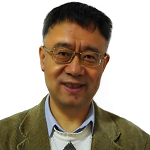
Title: A Nonlinear Formulation and Analysis of Surface Acoustic Waves in Elastic Solids with the Extended Galerkin Method
Keynote Talk
Prof. Ji Wang
Ningbo University, China
Abstract
The nonlinear acoustic waves in piezoelectric resonators are getting attention in product development due to the continuous shrinkage of sizes to a critical limit which causes the effect of electric field is no longer neglectable. Consequently, nonlinear formulation and analysis of wave propagation in such smaller resonators are important in the inception and development future generation of resonators with good properties. By formulating wave propagation and vibrations with a complete set of nonlinear variables and constitutive relations, both kinematic and constitutive nonlinearities are included along with boundary conditions. These differential equations have to be simplified with the newly proposed extended Galerkin method for a simple and efficient solution procedure. Specifically, the weighted integration over both physical domain and the full period of time, in case of a periodic motion, is employed to both equations of motion and boundary conditions, then nonlinear variables including amplitudes and frequency, among others, appear in a set of algebraic equations as a typical nonlinear eigenvalue problem. If it is a static problem, then it is a problem involving the solution of a system of nonlinear equations. In principle, this is equivalent to the utilization of harmonic balance method for the approximation of trigonometric functions, as it is explained in earlier introduction of the extended Galerkin and Rayleigh-Ritz methods. The nonlinear formulation and solution of the Rayleigh wave problem is straightforward with the extended Galerkin method, and numerical results of wave velocity versus deformation for both isotropic and anisotropic materials are obtained and also validated with the finite element analysis. The nonlinear formulation will be applied to the analysis of surface acoustic wave resonators to address the nonlinear effect related to the development of miniaturized products with good properties as a novel technique
Biography
Professor Ji Wang has been a Qianjiang Fellow Professor of Zhejiang Province at Ningbo University since 2002. He also served as Associate Dean for Research and Graduate, School of Mechanical Engineering and Mechanics, Ningbo University, from 2013 to 2019. Professor Ji Wang is the founding director of the Piezoelectric Device Laboratory, which is a designated Key Laboratory of City of Ningbo. Professor Ji Wang was employed at SaRonix, Menlo Park, CA, as a senior engineer from 2001 to 2002; NetFront Communications, Sunnyvale, CA, as senior engineer and manager from 1999 to 2001; Epson Palo Alto Laboratory, Palo Alto, CA, as Senior Member of Technical Staff from 1995 to 1999. Professor Ji Wang also held visiting positions at Chiba University, University of Nebraska-Lincoln, and Argonne National Laboratory. He received his PhD and Master degrees from Princeton University in 1996 and 1993 and bachelor from Gansu University of Technology in 1983. Professor Wang has been working on acoustic waves and high frequency vibrations of elastic and piezoelectric solids for resonator design and analysis with several US and Chinese patents, over 200 journal papers, and frequent invited, keynote, and plenary presentations in major conferences around world. He has been board members, advisors, and consultants to many leading companies in acoustic wave device industry. Professor Wang has been a member of many international conference committees and currently serving the IEEE UFFC Technical Program Committees of the Frequency Control and Ultrasonics Symposia, the IEEE MTT-S, and the IEC TC-49. He is also the funding chair of Committee on Mechanics of Electronic and Magnetic Devices, CSTAM, and the SPAWDA. From 2015, Profess Wang is the editor-in-chief of Structural Longevity and members of the editorial boards of several international journals.
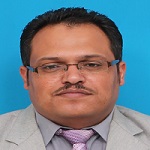
Title: Towards AutonomousRoad-Marks Painting systems in the Smart Cities
Keynote Talk
Dr. Mohammed A. H. Ali
University of Malaya ,Malaysia
Abstract
Road-marks play an important role to highlight the road driving zones, non-driving zones and driving directions to the vehicles’ drivers at both day and night times. They are performed manually in the current systems worldwide through two main processes, namely, pre-marking and road-marking by thermoplastic and cold machines. Such manual-system is suffering from:
- No safety at all with such system, blocking of the roads for long time during painting process
- manual machines need to be adjusted from time to time based on the roads conditions
- the accuracy of such system can’t be always guaranteed due to human errors,
- manual system is always labor intensive and requires a high operational cost due to the wages needed for hiring professional operators.
An AI-based autonomous road-marks system can overcome the drawbacks of the manual-system, but such system must be able to deal-with hundreds of road-marks conditions which in-fact need a robust algorithm to determine the types of road-marks and drive the robot/vehicle in the right position along its movement without human interaction.
Our recent works in autonomous road marks painting are considered as one of the 1st works towards building an autonomous vehicular system for road-marks painting.It depends on 2 sub-system: online sensor fusion for integrating the data of LaserRangeFinder, Wi-fi camera and odometry to determine the exact path of the paint within the road environments.
Biography
Dr. Mohammed Abdo Hashem is currently working as Senior Lecturer (Assistant Professor) with the department of Mechanical Engineering at Faculty of Engineering in University of Malaya starting from April 2021-Onwards. He has a quite long experience in teaching courses in the fields of Mechanical and Mechatronics Engineering for more than 8 years. Besides that, he was working as engineer in several industrial companies for more 3 years. In 2015, He was appointed as a senior lecturer and leader of control, software and automation teaching & research groups, in the Faculty of Manufacturing Engineering- Universiti Malaysia Pahang, where he led many research and teaching activities during the period of appointment between 2015 and 2021. In the research, a total of four patents have been granted to his novel research and products, namely; laser simulator approach for path planning, intelligent spanner and the autonomous road marks painting system version 1&2; with furthermore publishing more than 41 papers in high indexed ISI journals, Scopus, chapters and conferences. He recieved more than 12 grants as leader from MOHE (1FRGS and 1 PRGS) and Universiti Malaysia Pahang (8 RDU grants) with a total amount of 300KUSD. His research interests include, but are not limited, the following areas: Autonomous Mobile Robot Navigation, Artificial Intelligence, Robot Path Planning, SLAM, Industrial Robotics, Mobile Manipulators, Sensors Fusion, Mechatronics Systems, Automation and IR.4, Intelligent Active Force Control, Signal and Image Processing. Currently he is working, in his research group, on developing a novel AI algorithm, called laser simulator logic, that helps to avoid the drawbacks of current fuzzy logic type 1 and 2, especially in the noisy environments of industrial systems.
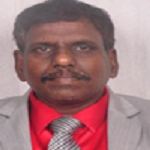
Title: Biomedical engineering in Coronary artery stenting
Invited Talk
Dr. Ramachandran Muthiah
Thoothukudi Medical College, India
Abstract
Technological advancements of coronary stents have progressively revolutionized the treatment of ischemic heart disease over the past 40 years.The process of atherogenesis is beyond the mere accumulation of lipids, as it presents a series of responses characteristic to inflammatory disease .Repeated episodes of ischemia are a potential source of the inflammatory stimulus1, and the so-called “ inflammatory hypothesis ”is now a targeted, therapeutic area in clinical and experimental cardiology. However, coronary artery disease (CAD) could become chronic (arteries narrowing over time) or acute (resulting from a sudden rupture of plaque), necessitating stent-based clinical intervention, to unblock arteries and regulate normal blood flow.A stent forms a tiny wire mesh tube designed to remain permanently implanted at the intended site.
Although bare metal stents (BMS) prevented abrupt occlusion/recoil for reproducible clinical outcomes, the challenge of in-stent restenosis (re-narrowing artery wall after stent implantation) is troublesome. Drug eluting stents (DES) introduced , primarily addressed in-stent restenosis. Nanotechnology during PCI promote healing by inducing endothelialization of the stent and reduce restenosis. Endothelial healing and re-endothelialization may restore the injured vessel. Nano-sized hydroxyapatite coating, carbon nanoparticle coated stents with consistent release of sirolimus, pitavastatin and Magnetic silica nanoparticles with rapamycin exhibit endothelialization in vitro-studies. Liposome encapsulated alendronate (a biphosphonate), an antimitotic drug (paclitaxel) in the form of albumin - based nanoparticles with significant antiproliferative effects can reduce restenosis and neointimal hyperplasia in animal models. An in-depth review of bioresorbable stents and scaffolds deserve a separate entity. Electrospunnanosized fibrous scaffolds, Synthetic alternatives for coronary artery bypass grafts were studied in graft procedures.
Biography
Ramachandran Muthiah, born on 10/5/1966 in a small village at Keezkulam and father (Muthiah) belongs to Enayam Thoppu and mother (Swornam) belongs to Keezhkulam.. Primary school education at Aanan vilai primary school at Keezhkulam and secondary school education at Concordia higher secondary school at Pootteti in Theruvukadai near Karungal in Kanyakumari District in Tamil nadu state of India. Completed MBBS in 1989 under Madurai Kamaraj University in Tirunelveli medical college, M.D. in General Medicine in 1996 under MGR medical university in Tirunelveli medical cullege, D.M. in cardiology in 2003 at Madurai medical college under Tamil Nadu Dr.MGR Medical University,Chennai and completed 6 months course in Interventional cardiology at Batra Heart centre under National board of examinations, Ministry of health, Govt of India, New Delhi in 2006 . Worked as medical officer in Rural health services for 5 years and in teaching category as Assistant Professor at Madras medical college, Coimbatore medical college, Thoothukudi medical college and Professor at Dr.SMCSI Mission hospital & Medical college, Karakonam, Trovandrum and Azeezia Medical college, Kollam. Marrital status get troubled in 2004 at Coimbatore, career get spoiled thereafter in Tamil nadu and kerala states via some irrational men in higher cadre and suffered a lot as police arrest, psychiatric custody and jail imprisonment in both Tamil nadu and kerala states of India through its police, political, medical and judiciary sectors.. Published many papers in Cardiosource, American College of Cardiology Foundation, Case Reports in Clinical Medicine (SCIRP) and Journal of Saudi Heart Association. Special research on Rheumatic fever and Endomyocardial fibrosis in tropical belts, Myxomas, Ineffective endocarditis, apical hypertrophic cardiomyopathy, Ebstein’s anomaly, Rheumatic Taussig-Bing Heart, Costello syndrome and Tetralogy of Fallot.
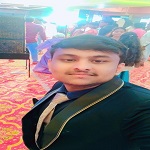
Title: The Growing Trend of Artificial Intelligence and it’s applications
Speaker Talk
Akshay Ashokrao Deshmukh
Aiming for Indian Institute of Technology, India
Abstract
The word ‘’Artificial Intelligence’’ itself derives the meaning that the intelligence developed by machines artificially. Artificial intelligence was not more developed previously. but, in the last few decades, it had developed drastically. even, though AI engineering is offered by various institutes in India. IN artificial intelligence, the machines are developed to grasp the ‘’human cognitive skills, that are associated with the human mind, but not similar. The human skills are learning and problem-solving ability. Some AI applications include web search engines, and recommendation systems (YouTube, Netflix).Artificial Intelligence was founded as an academic discipline in 1956, and since then it has grown drastically. The various sub-fields of AI research are centered around particular goals and the use of particular tools. The traditional goals of AI research include reasoning, knowledge representation, planning, learning, natural language processing, perception, and the ability to move and manipulate objects. General intelligence (the ability to solve an arbitrary problem) is among the field's long-term goals.
To solve these problems, AI researchers have adapted and integrated a wide range of problem-solving techniques—including search and mathematical optimization, formal logic, artificial neural networks, and methods based on statistics, probability and economics. AI also draws upon computer science, psychology, linguistics, philosophy, and many other fields.
Biography
“ Will be updated soon...”
+91 9491 456 452
Door No.200, Immidhihalli Main Road, Whitefield-560066, Bangalore, India
About Us
Global Scientific Guild organizes conferences and webinars to promote quality research and real world impact in an atmosphere of true international co-operation between scientists, doctors, professors, practitioners, engineers and industry by bringing together the world class renowned personalities to discuss the latest developments and innovations at one common platform.